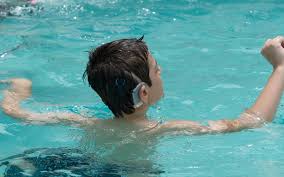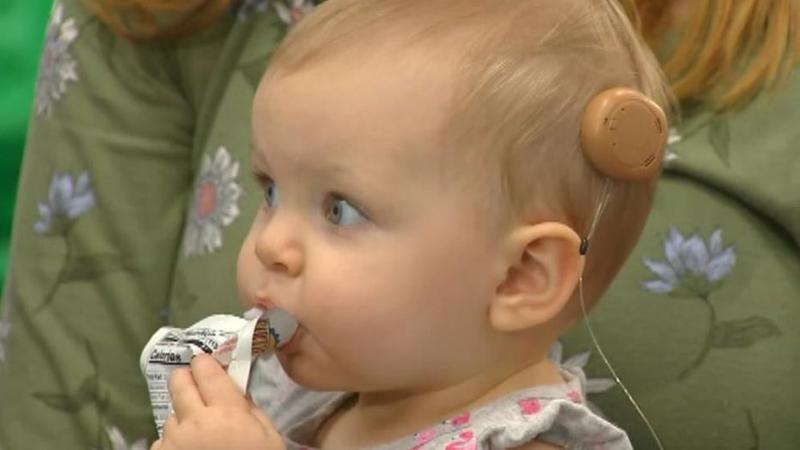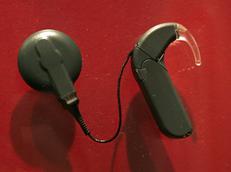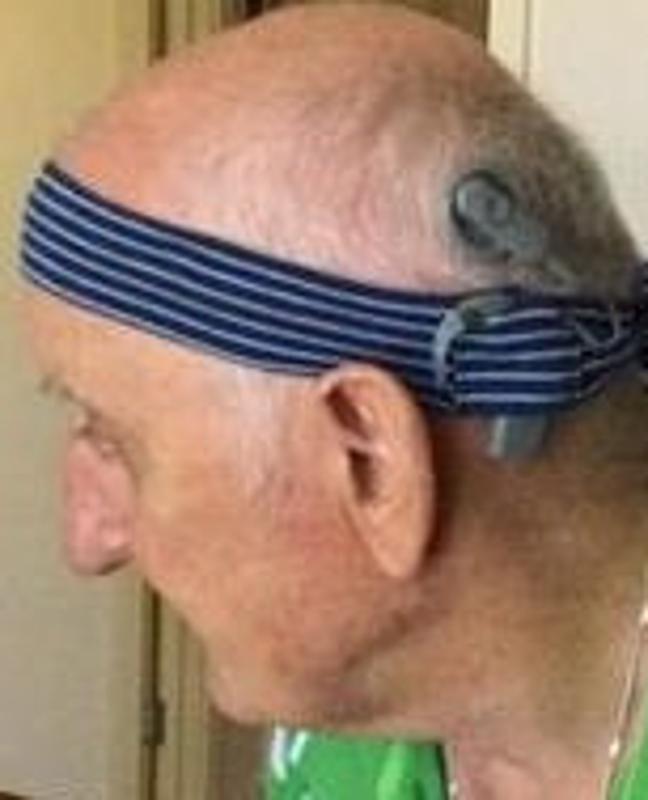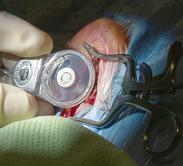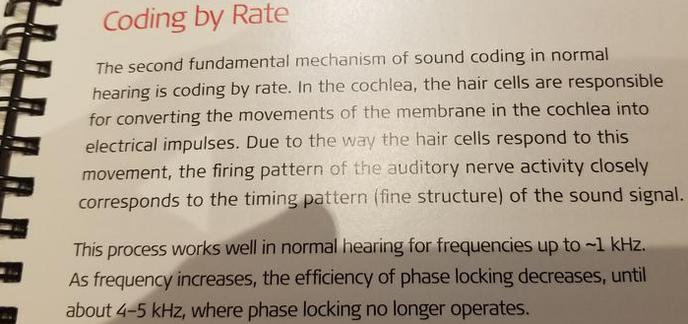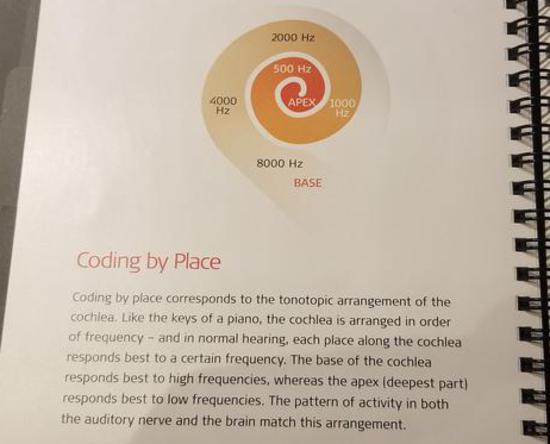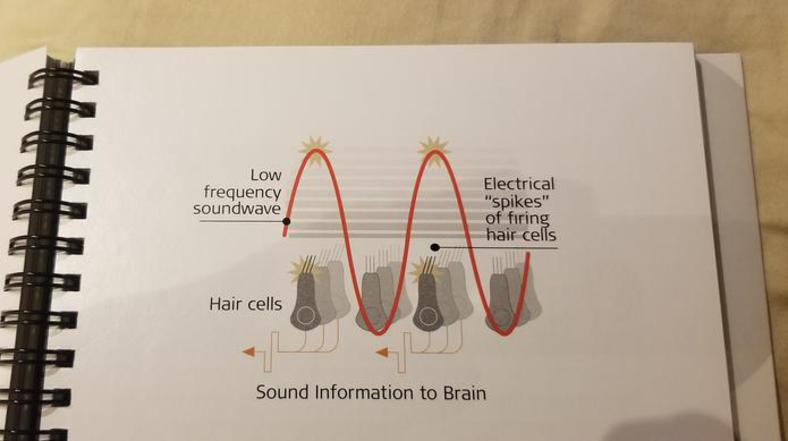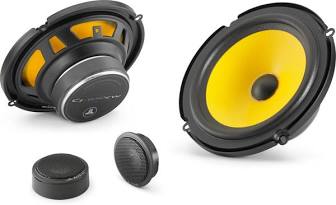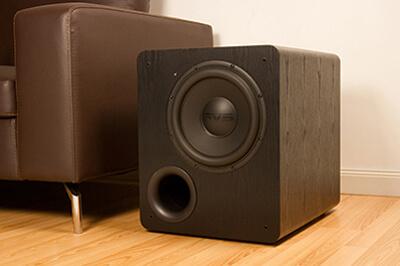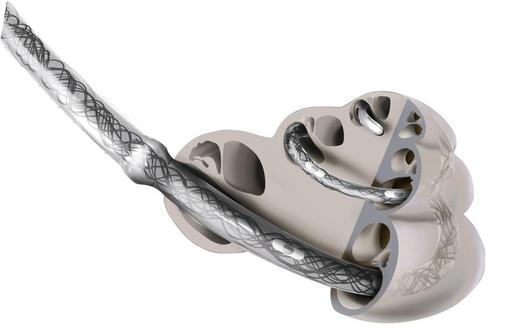Why are there different kinds of implants? And why aren't each company all trying to make the same technology better?
There are two separate ways to make a cochlear implant. The person getting an implant or for their child must consider the 2 ways. It is not fair for the person not to know both theories on how a cochlear implant should be made.
The first theory is "place theory". Those who believe that when the array is in the cochlea it responds better to a simple tone at only once place at a time throughout the length of the cochlea. The others disagree and follow theory 2. They believe that the cochlear implant should be build based on the response of timing to the sounds, not necessary where they are placed.
So, out of the 3 companies, the companies that after all their research are building their implants based on Place theory will build them based on separating sounds into different groups. Like, the lower pitches will be sent to the part of the cochlear that is most responsive to lower pitches and the higher pitches sent to another place. All the channels and electrodes are spaced out accordingly to this in the cochlear. Those who have a strong opinion that this is not the right way to build a cochlear implant will disagree. These people that may have interpreted their research a different way from their studies believe that the sound signals should be made into pulses to see where the response is best based on the timing of the pulses.
Based on the person getting the implant, before deciding on which theory you should go with I feel it is much more important to be aware of the possible healing problems, especially the crucial 2 week period after implantation. Those that have not researched how lowering the partial oxygen pressure and rising the voltage can be a game changer should. I am not going to give medical advice but this is my best tip for those that do not know where to research and what questions they should really be asking.
Talking to sales reps for each cochlear implant brand:
And when you talk to reps you will be almost convinced they are the best until you talk to the 2nd manufacturer. When I ask people which brand they chose and then I ask them was it the company that you talked to first or second, out of all the people I ask it is about 8 out of 10 they go with the 2nd company. It doesn't matter which order it was or brand they learned about first, it is always that second mouse that gets the cheese. I hate to say it but the early bird does not get the worm when it comes to picking out a cochlear implant, this is just from my observations. Most people I talked to do not choose the implant from the 3rd rep. It is the most difficult for them as the person has been told two sides of the story from the first 2 reps and they have to clear up all the confusion. If they are successful, then the person will choose their brand. It seems people are buying based on who they liked the best and was most helpful but not choosing a cochlear implant based on qualitative reviews and based on unique ear ecology. This is very disturbing to me.
Stories I hear... "Oh, xyz rep for xyz company was so sweet. She answered all my questions". Or, xyz rep sat down with us and spent a lot of time helping us and we are confident on which brand we went with".
I have rarely seen any of these companies talk about the cons. Only the pros of their brand. It is always the competitor that uses their "pro" and turns it around to make their brand sound better. I personally believe people should know the pros and cons from each cochlear implant brand from the company they are hearing about from that rep but I doubt that will ever happen. I have a better chance of that rep doing nopys that getting them to expose the cons of their product
WARNING: Many patients read brochures and feel well informed and are only asking questions based on that. People are asking questions based on the points they want people to focus on. It is like they already set you up to consider only the points they want you to consider. When people talk to different reps for cochlear implant companies, there is always a strategy at play depending on if that rep is the 1st 2nd or 3rd person they had their consultation with. The 2nd sales implant rep hears everything the first cochlear implant rep said and if they will usually counter it and use it to make their implant sound better.
Note: A sales rep usually gets 1 chance to convince them of their cochlear implant brand. Companies can spend thousands of dollars in advertising to get each opportunity to meet with each potential implant patient. I have noticed most of the reps are speech pathologists trying to promote different brands of cochlear implants. There are some interesting characteristics between all the speech pathologists that aren't working for an implant company and ones that do. I have talked to probably 60 speech therapists in the last 2 months and I would say that if one implant sales rep was thrown in their among the 60, I would be able to pick them out. The recruiters for these companies don't just pick out random speech pathologists to do the job. If they get the wrong person who cannot articulate exactly what they want...they won't be able to convince people their cochlear implant is the "best brand". I also noticed that they select different people based on the customer. If someone is a senior, they will most likely be matched up with a senior sales rep.
We're open now.
Ask for Beth
1-877-827-4849
CochlearImplantsReviewed.com
... because every company is saying their cochlear implant is the best
We're open now.
1-877-827-4849
Ask for Jay
ADVANCED BIOTICS - COCHLEAR - MED-EL - OTICON - RECOCHLEAR - OTICON - NUROTRON
Medel brand - for parents choosing for kids who are prone to head injuries may want to consider their internal receiver embedded in ceramic vs other brands that are made with titanium. Ceramic is more prone to cracking. To make up for this, the ceramic type needs a deeper bone bed and the surgeon has to drill deeper. Many parents have to make a choice if they want a titanium or ceramic receiver type.
The advantage to the ceramic is that since it is deep it is protected by bone and if there is a blow to the head the receiver won't shift up or down like the ones with a less deep bone bed. When the receiver is just under the skin and the bed is not deep there is less inward movement and this is another thing parents especially need to research before choosing for their child.
Comparing Med-el to Cochlear "TM"
It is very hard to recommend one over the other with these two brands as they are both tier 1A brands. I usually have to spend a long phone call and read over their quiz and really get to know their body ecology (partially the ear) before saying I recommend one of these brands over the other. When people are too quick to recommend a brand then people don't feel confident in their answer. Also, I have never seen one company recommend their competitors company. I just don't want people to have buyer's remorse after finishing an implant which people call me all the time "after they already had their implant' and ask if they made the right decision.
I have talked to many reps in different states and I will say that each company's "promotors" each have their own vibe. Many people don't believe me when I can go to a conference and without knowing which cochlear implant company they work with I can pick it out. Also, I have hung out in all the waiting rooms and talked to many people that get super frustrated the closer to the time they have to make a decision on which implant to get. Just by talking to patients I can usually pick out which company they just talked to or who they are working with...."I am like... don't tell me... let me guess which one is your first choice then second. I usually get the first one right.
DO NOT CHOOSE AN IMPLANT
WITHOUT RESEARCHING
CLASH OF THE TITANS
HOW TO CHOOSE A COCHLEAR IMPLANT FROM THE 3 "PIONEERS"
Advanced Bionics
It is always "what about the AB brand" when people getting more clarity on the other two brands. For some reason, in people's minds it is never in the same group as Med-el and Cochlear "TM". It is alway as if people tell me that they heard about this brand. But, at some clinics, it is highly promoted. I still can't figure out why most people are aware of this brand but are not doing this crazy side by side comparison between all three brands like they are putting so much energy and time meeting with reps about the other 2 brands. I know that they spend the least amount on advertising so their brand and website is not in people's faces like the brand that has sold the most. I never hear anything negative from people that have AB. If you go to a clinic you will probably see more than 80% of the people with implants having either Med-el or Cochlear "TM". (I have never had to shift my pinky to the "" key and the control key so many times in my life. I was told by someone calling me to make sure I put that after the brand name so I am doing it. (just in case someone is wondering why I have TM after every time I use the word Cochlear (TM).
Question to ask all 3 companies:
Ask what their implant coding and algorithms are based on. Each brand has more of one than the other. Coding by place (tonotopicity is the medical term you may hear for this) or Coding by rate (phase locking). Once you have an opinion on this, then knowing which candidate you or the person getting the implant is for certain brands. Most people want a full spectrum hearing and high fedility sound which requires an electrode at least 31.5 mm for most people that goes the length of the entire cochlea but NOT everyone is a candidate for this. Those that are a candidate are very lucky. Those that get a full spectrum electrode may not utilize it and may be a candidate for a shorter electrode which is good for those people as it can preserve any residual hearing.
Instead of me trying to explain "coding by place and "coding by rate", I am going to take a picture of it. I highly recommend reading this book I got this from as it gets down to the nitty gritty and it is a little difficult to understand for those that are not well researched but there are things that people might get out of different pages of interest. The book is not for sale and was given to me. I am asking if I can make copies of it to send to people but waiting for their response since I just emailed them.
I urge everyone to read this book that teaches about this.
The cochlear implant with the best sound:
Many people ask me which sounds the best. Having a long electrode giving a full spectrum sound that splits all the sounds into a larger number of frequency bands is not the only important thing as fine tuning the sound. The early generation implants mastered splitting the sounds up but did not have the technology to fine tune the sounds like the ones do now. Depending on the brand people get, some are great fine tuning a conversation in quiet environments but if it's noisy then there can be distortion. These are the people I interview that have a hard time with pitch and have a hard time listening to music.
This is another picture that I found in the manual I studied.
Many people ask me which sounds the best. Right now it seems every company is doing everything they can to be the one that is making hearing less "envelope like" but with the finest structure. (the butterfly says it better than any words I have). Those who are candidates for full spectrum hearing should hear the highest fidelity sound of all the cochlear implants BUT ONLY if their ear have the right ecology to utilize it. When I meet people in noisy places and they have a hard time understanding me, I can almost always guess which brand they have within a few minutes. The hardest thing for many companies to master is getting their implant to improve rate coding and place coding at the close to the same rates without affecting the other as much.
Those that are a candidate for full spectrum electrodes should have the most success at hearing the widest range of tones and pitches. Many people that get cochlear implants have problems with this but this is not to say that they go the wrong one, they may have not been a candidate for the implant of choice.
I believe it is super important to know if you are a candidate otherwise getting an electrode that only stimulates 2/3s of the cochlear can be a limitation that many people will never be able to hear the sounds of the other third of the cochlea. Those that do not have their apex of the cochlea stimulated WILL NEVER HEAR THE DEEPEST BASE SOUNDS as the apex third of the cochlea is the part responsible for hearing the lowest sounds.
Consumer awareness: For those confused on electrode insertion depths.
Although I feel bad for people who have to get an implant with an electrode under 28mm, there is enough information from any of the electrodes between 18 to 24mm from the bottom of the cochlea. So those that get a shorter electrode might only get a restricted range of frequencies unlike those that get a 31.5 mm electrode will hear the full range. I was told an example would be like listening to music without the subwoofer but with only the tweeter and mid range speaker. Or, going into the car and turning the bass knob all the way clockwise to the left.
Note: if the apex of the cochlear is stimulated by a deeper electrode, this should stimulate the auditory nerve unlike electrodes that are too short. Not everyone is a candidate for a longer electrode for full spectrum hearing but for those that are, those that get the longer electrode that can activate a larger portion o their auditory cortex (I just remembered this from my 11th grade anatomy class. I cannot believe I finally found a purpose for learning that). The auditory cortex is the part of the brain that processes sound that the auditory nerve is connected to. (I will have to google this to just make sure). I also strongly recommend just to see if there are any possible gains to research what the Sony headphones that are mainly sold for people with tinnitus can do as far as stimulating anything hearing related that could possible raise the 02 stat, partial oxygen pressure, and raise the voltage. It can be a game changer if it helps. I have loaners as I don't expect anyone to buy them unless they know it works. I have no problem letting people borrow them. They can be very expensive for some people and if its for a kid, the kid should not have to suffer because the parent couldn't afford them when there isn't someone who loans them. Please see my after implantation page to see the headphones.
Having an implant that goes beyond 24mm is like having a subwoofer where people can hear the lowest tones. Having a 31.5mm electrode is like having a super expensive high fidelity home theater system that gives the richest sounds. Unfortunately, not everyone is a candidate and even more unfortunately, those that are are a candidate often don't know it and end up getting a an electrode that is shorter than they could have had.
Problem I have a concern with.
2 out of the 3 FDA cleared cochlear implants have this and it is up to the parent or person getting the implant to make their decision. There are 2 ways to look at it. If a cochlear implant company is using another hearing aids technology which they chose as the best on the market, (Cochlear uses Resound and AB uses Phonak. Med-el is not partnered with any of the hearing aid companies. So, if one of the hearing aid companies develops a breakthrough technology and only one company is partnered with them, that means the other 2 companies will not be able to use that technology. So, its good for the company when there is something new that comes out. But, if there is a new technology and Resound or Phonak don’t have it, then everyone that has an implant that gets an upgraded processor will not be able to use the latest technology if their cochlear implant company is not partnered with them. So, I urge people, especially buying for young kids to NOT partner with any hearing aid company. Older people that may not have plans to upgrade may want the latest technology and choose an implant that is partnered with either Resound or Phonak. If buying for a child, I personally believe the pros and cons should be considered.
Fight for the Lowest Compression
A 3:1 (3 to 1) compression is what is the most optimal hearing but due to lengths of certain cochleas and lengths of electrodes, it is can be possible but with sacrifices in sound quality. The worst thing is when a sound processor has to boost up the compression ratio to match the implant and the way the sound is heard to make them in sync. The 3 to 1 compression is our natural hearing just so people who didn't know. Back in the day, they had 12: 1 compression ratios. With the older generation types, the compression had to be drastically increased. The higher the compression is altered, the lower quality the sound is and it might sound far off from natural hearing. I strongly recommend asking to see what is the probability with someone's unique hearing situation how close they would expect to get down to 3 to 1 ratio and with what sacrifices in sound quality. These are the things people don't know to ask for. (I also have a huge list of questions to ask cochlear implant companies on my questions and answers page...not the questions "they want" you to ask that I believe set many people up for failure. See my sound quality page to learn more about how to get higher fidelity sound in cochlear implants.
Longer vs Shorter Electrodes - What confuses people the most when researching implants
I hope people get "medical reasons" for electrode length recommendations.
There are people saying shorter is just as good as the long electrodes. First, not everyone is a candidate for a longer 28 to 31.5mm electrode. About 95% of the people are a candidate but the other 5% do not have cochleas that will support a long electrode. The big problem is that those who are a candidate get talked out of it or fear tactics are heavily talked about so people will get a less risky shorter electrode since if they are not the flexible type. The good thing about the shorter ones are that they have more electrode contacts so sound can be upshifted.
Technology is so sophisticated now that they can make a sound a person could not hear if they didn’t have the longest electrode and make the sound by shifting the sound. But, the sound may not sound as clear and resonant as it would be if it came in naturally. People can still hear it but someone’s voice may not sound as 100% as it would if the electrode was longer.
Everyone has a different opinion on a full spectrum frequency range. Some companies say 100 hz while others say 70 hz. The implants that are rated for 70 hz will be able to hear true deep bass unlike the brands that do not go under 100 hz. For those that are into music, the implants with 31.5 mm electrodes that can process 70hz can give this true full spectrum sound with no cold spots.
For those concerned about getting too short of an electrode: Most cochlear implants cannot support frequencies under 100hz. Only implants with 31.5mm electrodes can offer true high fidelity sound (deep bass tones under 70hz). Most speakers on computers or cell phones won’t let you hear true 70 hertz. So, unless someone is going to have an appreciation for music, a 28mm electrode is still considered full spectrum for everyday living. So, if someone is lucky, and a 31.5 mm electrode will fit inside their cochlea, then by all means, no questions asked, a 31.5 mm should let you hear these deep sounds. Even a 28 mm electrode should let you hear the sounds at 100hz much clearer. Anything less, then the sounds would have to be re-interpreted and will not sound truly authentic. Most people will never hear sounds in everyday life under 100hz.
I strongly urge anyone that is told to get a shorter electrode than 28mm to really make sure they are not a candidate for the longer fuller spectrum ones to avoid disappointment after implantation.
Question to ask surgeons: I urge people to ask what their comfort level is implanting cochlear implants with 1 turn, 1.5 turns, 2 turns in the cochlear. For those that are not comfortable implanting an electrode over 28mm, especially 31.5mm, I always ask them how much they know the ECA and the Escudé formulas. These formulas are used to predict the electrode insertion length. I was amazed how many people just go by X-rays and not the mathematical equation to predict electrode length. Some surgeons know how to use this formula and instead of just going with a 28mm electrode they maybe use a 29.3mm electrode. (YES, COCHELAR IMPLANT COMPANIES CAN CUSTOM MAKE EXACT LENGTHS BUT THIS IS RARELY TALKED ABOUT SINCE IT REQUIRES A LOT OF WORK). Do not be afraid to ask about custom lengths.
Notice: When a surgeon gives you his electrode length recommendation, make sure you know how close the 2 measurements from the ECA equation and Escudé equation match each other. One might say use an electrode that gives 1.73 turns and the other equation may say 1.68 turns. If you go to different doctors, get these measurements (that they normally just don't give me unless I ask). When I ask for these they are shocked that I even know about this. If you go to different cochlea implant surgeons and these 2 numbers are similar between different doctors, then it is easier to trust "2nd opinions" that most people like to get.
Most electrodes people get rarely go over 2 turns (about 630 degrees). The deepest insertion length I have seen can go 720 degrees. Based on all the people I have interviewed, the kids with the deepest electrodes compared with 24mm or under electrodes do better with language since it is more clear and a higher spectrum than the short electrodes can offer.
Someone asked me why Med-el doesn't seem to have as good of a processor as their competitor.
There are companies that have highly sophisticated processors that other companies don't have that have processors designed to process electrodes 28 to 31.5mm (Med-el brand). I won't say the other companies but it should be obvious by now). The other companies have processors that have coding strategies way more advanced beyond Med-els. There are way more coding strategies to make up for not having a longer electrode. To make up just having one electrode turn, it may have to process a lot more information that an implant with less information to process doesn't have to process. So, if Medels processor doesn't seem as optimized and up to date, they appear to need extra software to process deeper sounds past 1 cochlear turn. For those that do get a shorter electrode that has a more sophisticated processor, just be aware that this can cause increased electromagnet emissions. When the cochlear implant has to emit more radio frequency energy to the brain, this uses more battery power and the transmitter coils in the implant can give off higher EMF. Also, the fewer the electrode contacts, the less EMF created due to fewer electrical interactions. The choice decide on is if you side with a company that has fewer electrode contacts but a longer electrode or a short electrode but with a higher number of electrical contacts. After reading my site, I hope people will make this decision on their own from qualitative research rather than having someone tell you which theory is the best. My cochlear implant quiz should help for those that fill it out. I will choose the brand that best fits your answers. Take my cochlear implant quiz here.
I urge people to use an EMF meter. I have some loaners for those that can't afford one.
As far as getting an implant with a high number of electrode contacts (22 electrode contacts) or as low as 8 electrode contacts, most surgeons I have talked to say that there is no real need for more than 12 electrodes contacts if the length is long enough. The surgeons who have more experience with shorter electrodes usually tell me that more is better. Most still will not give me any formulas on how they came up with their decision. Below is the formula that is used to determine electrode length. This is beyond my college algebra.
If a company says a longer electrode wont fit in the cochlea, I urge people to get the reason in writing. There have been many times when one surgeon says a 28mm electrode is too long and another says a 31.5 (the longest on the market) would be fine to implant. I believe different surgeons have different comfort levels. Some are not aware that even soft silicon tips are available and have not researched these.
According to every doctor I talked to that has experience implanting all 3 FDA cleared brands, over 90% of the people can fit a 28 mm electrode with no problem as long as a silicon tip is used for insertion. This is the opposite of what certain company presenters have told me. This is why I think people are so confused.
